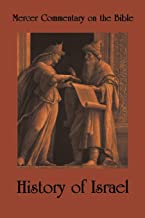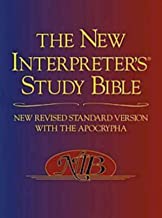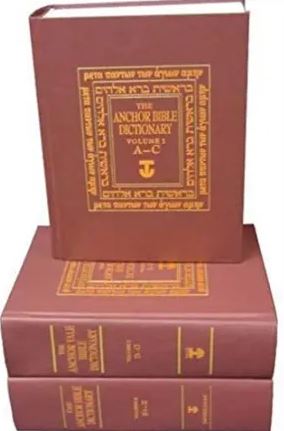In a previous post, I discussed Lamech’s bigamy and named some of the people in the Bible who were married to more than one wife. One issue I did not raise in that post was about Moses’ marital status. The issue I will seek to address in this post is whether Moses also was a bigamist, that is, whether Moses had more than one wife.
The problem of whether or not Moses was a bigamist comes because of the conflict that arose between Aaron and Miriam against their brother Moses. The rebellion of Aaron and Miriam against Moses was over the issue of leadership. Moses’ leadership over the people was questioned because he had married a “Cushite woman.” Below are two translations of the text which refers to the Cushite woman:
“Miriam and Aaron spoke against Moses because of the Cushite woman whom he had married, for he had married a Cushite woman” (Numbers 12:1 ESV).
“And Miriam and Aaron spake against Moses because of the Ethiopian woman whom he had married: for he had married an Ethiopian woman” (Numbers 12:1 KJV).
Numbers 12:1 is the only passage in the Old Testament where Moses’ wife is identified as a “Cushite.” Throughout the Pentateuch, Moses’s wife is identified as Zipporah, a Midianite woman and the daughter of Jethro, the priest of Midian (Exodus 2:21; 3:1).
The expression “Cushite woman” is used disparagingly against Moses because he had married a non-Israelite woman. The text in question raises several issues: was Zipporah the Cushite woman? Does Cush in this context refers to Ethiopia or to another place? Thus, the most important question related to our discussion is: Did Moses have one wife, Zipporah or did Moses have two wives, Zipporah and the Cushite woman?
In his book, Antiquity of Jews, Book 2, Chapter 10, Josephus wrote that while Moses lived in Egypt, he commanded the Egyptian army in a war against Ethiopia and that he married an Ethiopian woman. The following are a few excerpts from Josephus’s narrative about Moses in Ethiopia:
(239) The Ethiopians, who are next neighbors to the Egyptians, made an inroad into their country, which they seized upon, and carried off the effects of the Egyptians, who, in their rage, fought against them, and revenged the affronts they had received from them; but, being overcome in battle, some of them were slain, and the rest ran away in a shameful manner, and by that means saved themselves;
(240) whereupon the Ethiopians followed after them in the pursuit, and thinking that it would be a mark of cowardice if they did not subdue all Egypt, they went on to subdue the rest with greater vehemence; and when they had tasted the sweets of the country, they never left off the prosecution of the war; and as the nearest parts had not courage enough at first to fight with them, they proceeded as far as Memphis and the sea itself; while not one of the cities was able to oppose them.
(241) The Egyptians under this sad oppression, betook themselves to their oracles and prophecies, and when God had given them this counsel, to make use of Moses the Hebrew, and take his assistance, the king commanded his daughter to produce him, that he might be the general of their army.
(247) When he had therefore proceeded thus on his journey, he came upon the Ethiopians
before they had expected him;(248) and joining battle with them he beat them, and deprived them of the hopes they had of success against the Egyptians, and went on in overthrowing their cities, and indeed made a great slaughter of these Ethiopians. Now when the Egyptian army had once tasted of this prosperous success, by the means of Moses, they did not slacken their diligence, insomuch that the Ethiopians were in danger of being reduced to slavery, and all sorts of destruction;
(252) Tharbis was the daughter of the king of the Ethiopians: she happened to see Moses as he led the army near the walls, and fought with great courage; and admiring the subtility of his undertakings, and believing him to be the author of the Egyptians’ success, when they had before despaired of recovering their liberty, and to be the occasion of the great danger the Ethiopians were in, when they had before boasted of their great achievements, she fell deeply in love with him; and upon the prevalency of that passion, sent to him the most faithful of all her servants to discourse with him about their marriage.
(253) He thereupon accepted the offer, on condition she would procure the delivering up of the city; and gave her the assurance of an oath to take her to his wife; and that when he had once taken possession of the city, he would not break his oath to her. No sooner was the agreement made, but it took effect immediately; and when Moses had cut off the Ethiopians, he gave thanks to God, and consummated his marriage, and led the Egyptians back to their own land.
This narrative about Moses fighting in Ethiopia as the commander of an Egyptian army and his marriage to an Ethiopian princess is not in the Bible. It is difficult to believe that Josephus would create a fictitious narrative about Moses’ marriage to an Ethiopian woman, even though some scholars say that this narrative is fictitious. However, the source for Josephus’s information about Moses’ action in Ethiopia and his marriage to an Ethiopian woman is unknown.
Zipporah, Moses’ wife, was a Midianite woman. The Midianites were descendants of Abraham through his wife Keturah (Genesis 25:1-4). The Midianites lived in the Sinai region and in northern Arabia. Since the word “Cushites” or “Ethiopians” refers to black-skinned people, it is possible that the word was also applied to the Midianites to describe them as nomads with dark skin. Some scholars have identified Midian with Cushan. The synonymous parallelism between Cushan and Midian in Habakkuk 3:7 suggests that the words Cushite and Midianite are identical. Both views above try to affirm that Zipporah was the Cushite woman and that Moses had only one wife.
When Moses returned to Egypt from Midian, Moses brought Zipporah and his sons with him (Exodus 4:19-20). But, for unknown reasons, Moses sent Zipporah and his two sons back to Midian with Jethro (Exodus 18:2-3). Some scholars believe that Zipporah died in Midian and that after her death, Moses married the Cushite woman. Others believe that while Zipporah was away in Midian, Moses married a second woman, the Cushite woman mentioned in Numbers 12:1. These two views are attempts at saying that Moses had two wives.
Thus, the derogatory use of “Cushite woman” in Numbers 12:1 by Miriam is either an expression of contempt against Zipporah because she was not an Israelite woman or a racial slur used by Miriam to demean Moses’ Ethiopian wife.
The identification of the Cushite woman in Numbers 12:1 is difficult to ascertain. In Egyptian literature and in the Old Testament, the word “Cushites” refers to Ethiopians or Nubians: “Can the Ethiopian change his skin or the leopard its spots?” (Jeremiah 13:23 NIV). In Jeremiah 13:23, the NIV has the following note: “23 Hebrew Cushite (probably a person from the upper Nile region).”
On the basis of the statement by Josephus and on the basis of the use of the word Cush in the Old Testament, it is quite possible that the Cushite woman mentioned as Moses’ wife in Numbers 12:1 was not Zipporah, but another woman. However, whether Moses married this second woman while Zipporah was alive or after she died, it is impossible to know for sure.
NOTE: For other studies on Moses, read my post Studies on Moses.
Claude Mariottini
Emeritus Professor of Old Testament
Northern Baptist Seminary
NOTE: Did you like this post? Do you think other people would like to read this post? Be sure to share this post on Facebook and share a link on Twitter or Tumblr so that others may enjoy reading it too!
I would love to hear from you! Let me know what you thought of this post by leaving a comment below. Be sure to like my page on Facebook, follow me on Twitter, follow me on Tumblr, Facebook, and subscribe to my blog to receive each post by email.
If you are looking for other series of studies on the Old Testament, visit the Archive section and you will find many studies that deal with a variety of topics.
















